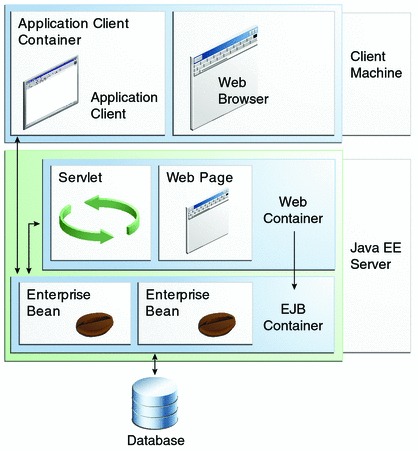JAVAEE 6 Tutorial
Part IV
Enterprise Beans
Part IV explores Enterprise JavaBeans components. This part contains the following chapters:
- Chapter 22, Enterprise Beans
- Chapter 23, Getting Started with Enterprise Beans
- Chapter 24, Running the Enterprise Bean Examples
- Chapter 25, A Message-Driven Bean Example
- Chapter 26, Using the Embedded Enterprise Bean Container
Chapter 27, Using Asynchronous Method Invocation in Session Beans
Chapter 22
Enterprise Beans
Enterprise beans are Java EE components that implement Enterprise JavaBeans (EJB) technology. Enterprise beans run in the EJB container, a runtime environment within the GlassFish Server (see Container Types). Although transparent to the application developer, the EJB container provides system-level services, such as transactions and security, to its enterprise beans. These services enable you to quickly build and deploy enterprise beans, which form the core of transactional Java EE applications.
Java EE Server and Containers

What Is an Enterprise Bean?
Written in the Java programming language, an enterprise bean is a server-side component that encapsulates the business logic of an application.
Benefits of Enterprise Beans
For several reasons, enterprise beans simplify the development of large, distributed applications. First, because the EJB container provides system-level services to enterprise beans, the bean developer can concentrate on solving business problems. The EJB container, rather than the bean developer, is responsible for system-level services, such as transaction management and security authorization.
Types of Enterprise Beans
Table 22-1 summarizes the two types of enterprise beans. The following sections discuss each type in more detail.
Table 22-1 Enterprise Bean Types
Enterprise Bean Type
|
Purpose
|
|---|---|
Session
| |
Message-driven
|
Acts as a listener for a particular messaging type, such as the Java Message Service API
|
Message Driven Bean
http://docs.oracle.com/javaee/6/api/javax/ejb/MessageDriven.html
No comments:
Post a Comment